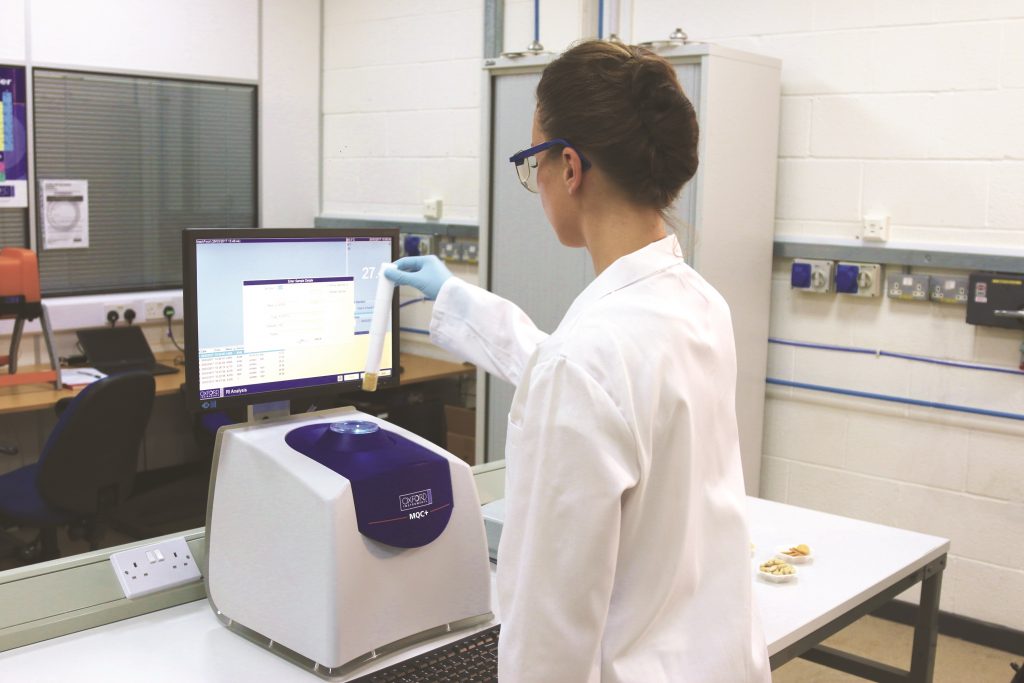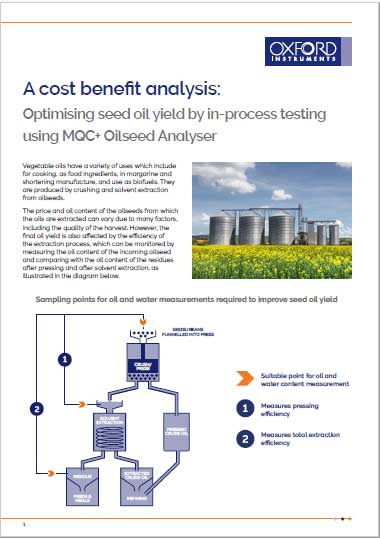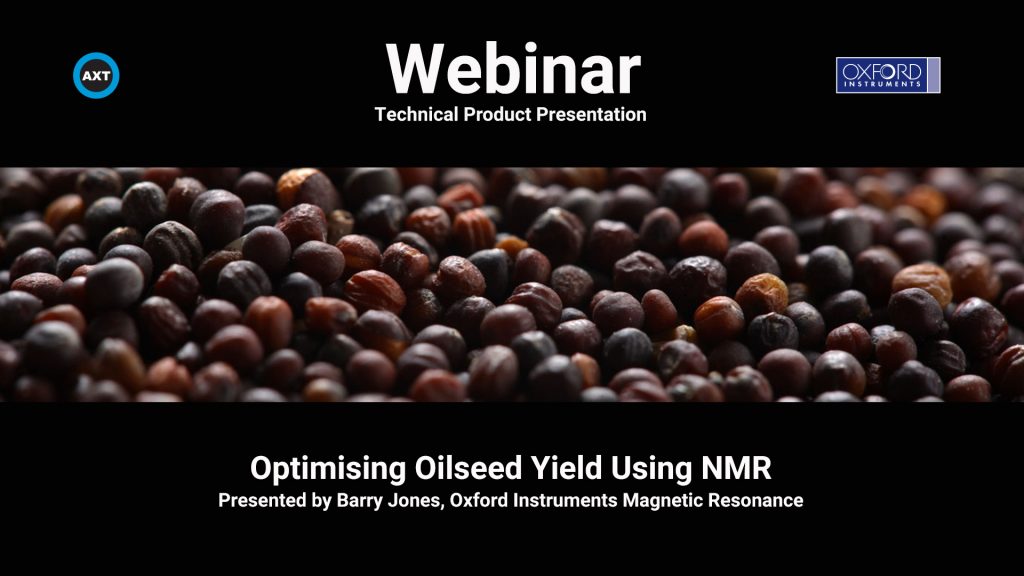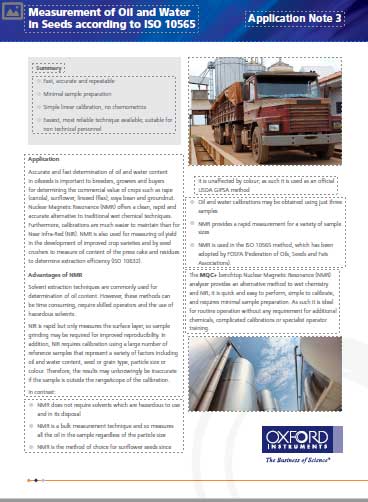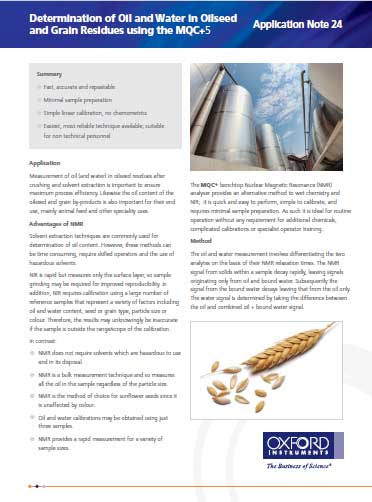Oilseed Analysis
Rapid, and in some cases, non-destructive measurement of oil or oil and moisture in oilseeds and oilseed residues is important for breeding, trading and processing purposes.
NMR is well suited for routine analysis of oilseeds with measurements completed in just seconds. The method is so simple that a new user can be trained up to use the instrument in just a couple of hours and a benchtop NMR unit like the Oxford Instruments MQCC+ is compact enough that it can be easily integrated into the smallest of labs, requiring only a standard power point to run it.
Oilseed Analysis Technology Comparison
Traditionally NIR and soxhlet have been the techniques used to analyse oilseeds. More recently NMR has been found to be a superior technique with key advantages being, faster analysis leading to higher throughput, more accurate, no sample preparation, no hazardous waste products to deal with and very low running costs. Furthermore, it is easier to use, has less steps in taking a measurement and is less prone to errors.
Soxhlet vs Benchtop NMR
The soxhlet technique can be traced back to 1879 and is a labour intensive, solvent extraction, wet chemical analysis technique. The table below compares soxhlet to benchtop NMR.
| Soxhlet | Benchtop NMR |
|---|---|
| Uses solvents -> hazardous and costly | No solvents or other chemicals |
| Labour intensive -> ~20 samples/day | Rapid measurement -> >250 samples/day |
| Subject to operator variation | Simple procedure with little scope for error |
NIR vs NMR
NIR is another technique used by some for oilseed analysis. In comparison, NMR is simpler and more robust. The following table provides a comparison between the two techniques.
| NIR | Benchtop NMR |
|---|---|
| Many standards required to build a calibration | Simple linear calibrations |
| Calibrations irrelevant if matrix changes | Robust calibration unaffected by changes in size, colour or origin |
| Measure other parameters e.g. protein & ash | Only measure oil and water but with higher precision. |
Cost Benefit Analysis – NMR in Oilseed Analysis
This application note compares and contrasts NMR with the soxhlet extraction technique.
Key Takeaway
If a canola crushing plant producing 100,000 metric tonnes of oil per year were able to increase their yield by 0.1% by process optimisation based on the oil content measurement, then the NMR instrument would more than pay for itself within a year of operation (assuming a market price of $800 dollars per metric tonne).

Learn More About Oilseed Analysis by NMR
On-Demand Webinar – Optimising Oilseed Yield Using NMR
Optimising oilseed yield can bring commercial advantages and operational efficiencies. To ensure the highest yield, the amount of oil and water in seeds must be accurately measured at all stages of the production cycle, from plant breeding through commercial agriculture to milling and processing. Nuclear Magnetic Resonance (NMR) provides a reliable, precise and affordable platform for such measurements.

